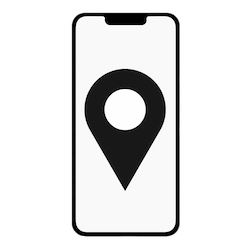How Much Does Car Insurance Go Up After an Accident?
An In-Depth Analysis
An accident can cause not only immediate stress and financial strain but also long-term effects on your car insurance premiums. The question of how much car insurance goes up after an accident is complex, influenced by numerous factors.
1. Fault and Severity
Your premium increase will often depend on whether you were at fault and the severity of the accident:
- At-Fault Accident: Typically leads to a higher increase in premiums compared to a not-at-fault accident.
- The Severity of the Accident: More significant accidents, particularly those involving injuries or significant property damage, might lead to higher premium increases.
2. Insurance Company Policies

Different insurance companies have varied policies regarding premium increases after an accident:
- Accident Forgiveness: Some insurers offer accident forgiveness programs that may prevent your premiums from going up after your first at-fault accident.
- Company Rate Structure: Premium increase percentages may vary significantly between insurers based on their internal rate structures.
3. State Regulations
State laws and regulations might impact how much an insurer can raise your premiums after an accident:
- Regulated Increase Caps: Some states may limit the percentage by which insurers can raise premiums after an accident.
- Mandatory Reporting: In some states, not-at-fault accidents must be reported and might affect premiums.
4. Your Driving Record
Your driving history plays a crucial role:
- Prior Accidents: If you have previous accidents on your record, you may see a higher increase.
- Traffic Violations: Other driving infractions might compound the effect of an accident on your premiums.
- Safe Driving Discounts: You might lose safe driving discounts, leading to an effective increase in your premium.
5. Type of Coverage
The coverage level you have can also influence the increase:
- Liability vs. Full Coverage: Full coverage might lead to higher increases than liability-only coverage since the insurer covers more risk.
6. Age and Demographics
Certain demographic factors might influence the premium increase:
- Young Drivers: Young drivers, especially those under 25, might see higher percentage increases.
- Gender: Some states allow gender to be a rating factor, and this might interact with the accident to affect premiums.
7. Geographic Location
Where you live can have an impact:
- High-Risk Areas: Living in an area with high accident rates might magnify the premium increase after an accident.
8. Timing and Trends
Broader economic and industry trends influence insurance:
- Inflation: General inflation might compound the premium increase following an accident.
- Industry Trends: If the insurance industry faces increased claims costs, it might lead to broader premium increases.
9. Average Percentage Increase
Though highly variable, some studies and data suggest average figures:
- Typical Range: Many sources offer a range from 20% to 50% increase for an at-fault accident, but this can vary widely.
- Not-At-Fault Accidents: Sometimes, even not-at-fault accidents can lead to a minor increase.
Conclusion
The question of how much car insurance goes up after an accident is nuanced, impacted by many factors from fault and severity to company policies, state regulations, personal driving history, and more.
Being aware of these factors and discussing them with your insurance agent can help you understand the potential financial impact of an accident on your premiums. Shopping around after an accident might also help you find a more favorable rate with another insurer.
Consider driving safely and taking advantage of defensive driving courses or other discounts to mitigate potential increases. Remember, insurance is a competitive industry, and understanding how it works can empower you to make informed decisions and possibly negotiate a more favorable rate, even after an accident.
Note: This article provides general insights and may not reflect specific individual circumstances or changes in laws or industry practices. It’s always advisable to consult with an insurance professional in your jurisdiction to understand your unique situation.
